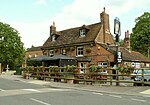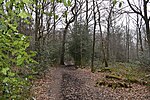Lemsford Springs

Lemsford Springs is a 4 hectare nature reserve in Lemsford, Hertfordshire, England. It is managed by the Herts and Middlesex Wildlife Trust, which purchased the site in 1970. Notable for its lagoons, the site is in the Lea valley and its other habitats are meadow, hedgerows, marsh and willow woodland. Before becoming a nature reserve, the site was used as a watercress bed. Its lagoons are fed by springs, so they never freeze over and provide an important habitat for birds in cold winters. There are two bird hides, and birds which can be seen include water rails, snipe and green sandpipers. Green sandpipers are migratory; a colour ringing project has revealed information about the travels of the Lemsford population including their breeding sites in Scandinavia.There are also water shrews and around fifty species of water snails.The reserve is kept locked and access can be arranged with the Wildlife Trust warden.
Excerpt from the Wikipedia article Lemsford Springs (License: CC BY-SA 3.0, Authors, Images).Lemsford Springs
Lemsford Village, Welwyn Hatfield
Geographical coordinates (GPS) Address Nearby Places Show on map
Geographical coordinates (GPS)
| Latitude | Longitude |
|---|---|
| N 51.796447 ° | E -0.22866 ° |
Address
Lemsford Village
Lemsford Village
AL8 7TN Welwyn Hatfield
England, United Kingdom
Open on Google Maps








